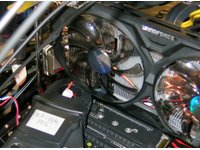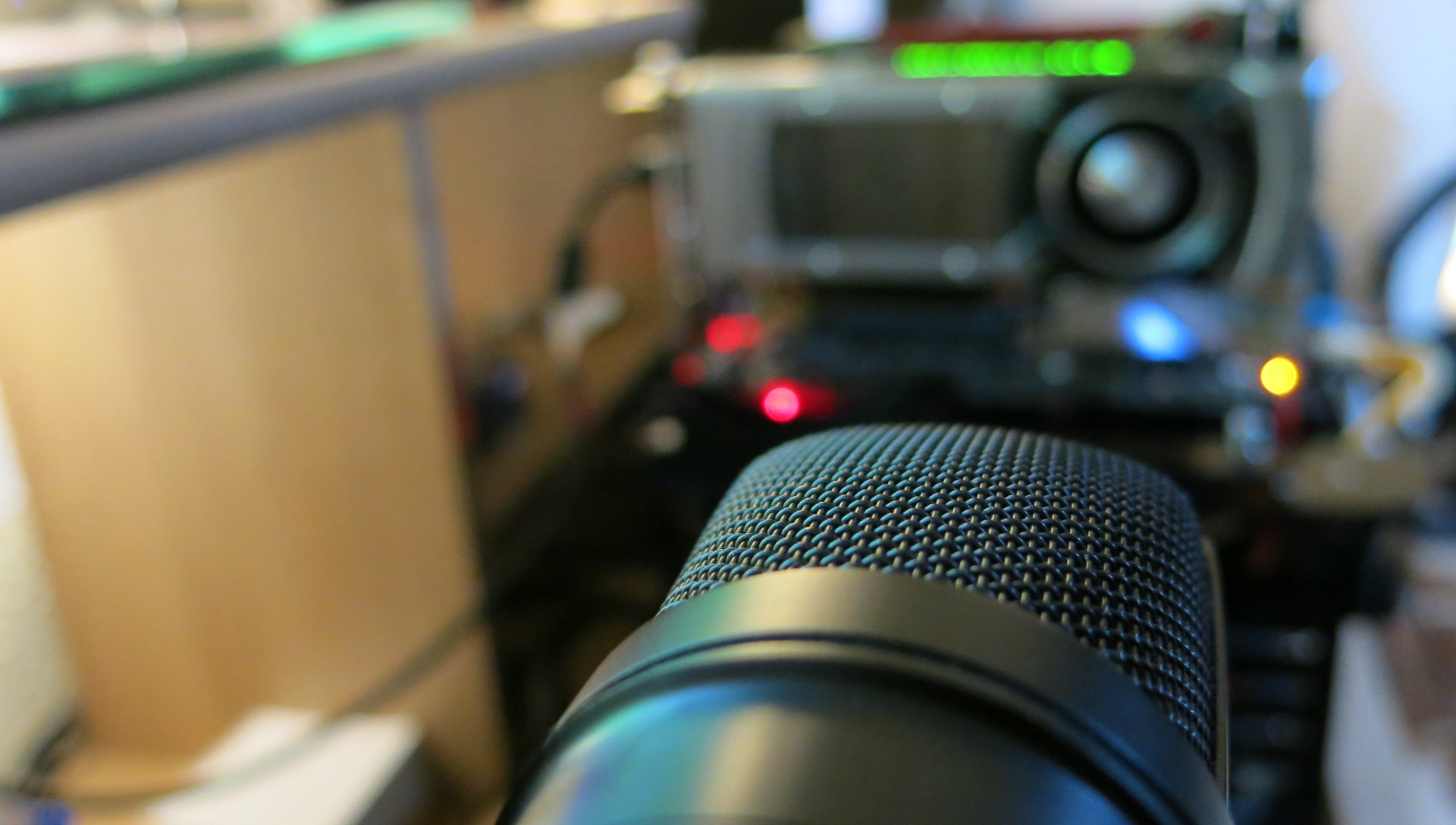Nvidia GeForce GTX 960: Maxwell In The Middle
Test System And Benchmarks
Gaming
This article marks the first international use of Tom's Hardware's reference platform, a forward-looking system based on Intel's Core i7-5930K. We overclocked it to 4.2GHz, which should be suitable to alleviate platform bottlenecks from the game benchmark results.
As always, we strive to represent results across a wide range of relevant graphics hardware. For this launch, that means we're including the GeForce GTX getting replaced and the end-of-lifed GeForce GTX 770. From AMD, we selected the GeForce GTX 960's main competition, the Radeon R9 285, in addition to the Radeon R9 280X. Finally, we included the GeForce GTX 970 and Radeon R9 290X to show what the next tier of graphics cards is capable of.
Again, Nvidia did not supply us with a reference board for testing. We were forced to rely on the factory-overclocked Asus Strix GeForce GTX 960 instead. While we're disappointed that we aren't able to provide baseline performance results, the selling point of many third-party models with aggressive factory overclocks is only $210, just $10 higher than the base MSRP. As such, Asus' Strix give us an acceptable representation of well-priced factory overclocked cards.
We tested some of the most popular games at 1920x1080 and 3840x2160. The 4K resolution is equivalent to four 1080p monitors. Despite that massive number of pixels, 4K displays are becoming more popular every day thanks to sub-$600 options like Asus' PB298Q:
Unlike older models that require splitting a single video stream into two HDMI inputs, this 28" display is capable of 3840x2160 video at 60Hz over a single DisplayPort 1.2 cable. You can read more about the screen in Asus PB287Q 28-Inch 4K Monitor Review: Ultra HD For $650.
We tried to use game settings that the GeForce GTX 960 can handle at those resolutions. In many cases, the 960 simply isn't able to cope with 4K at the lowest possible detail levels. But in all cases it facilitates attractive detail settings at 1080p.
| Header Cell - Column 0 | Test System |
|---|---|
| CPU | Intel Core i7-5930K (Haswell-E), 3.5/3.7GHz, Six Cores, LGA 2011-v3, 15MB Shared L3 Cache, Hyper-Threading enabled, Overclocked to 4.2GHz |
| Motherboard | MSI X99S Xpower AC (LGA 2011-v3) Chipset: Intel X99 Express, BIOS v1.5 |
| Networking | On-Board Gigabit LAN controller |
| Memory | Crucial Ballistix DDR4-2400, 4 x 4GB, 1200MHz, CL 16-16-16-39 2T |
| Graphics | EVGA GeForce GTX 9701050/1178MHz GPU, 4GB GDDR5 at 1753MHz (7012 MT/s)Nvidia GeForce GTX 7701046/1085MHz GPU, 2GB GDDR5 at 1752MHz (7008MT/s)Asus Strix GeForce GTX 9601253/1317MHz GPU, 2GB GDDR5 at 1800MHz (7400MT/s)Nvidia GeForce GTX 760980/1033MHz GPU, 2GB GDDR5 at 1502MHz (6008MT/s)AMD Radeon R9 290X1000MHz GPU, 4GB GDDR5 at 1250MHz (5000MT/s)AMD Radeon R9 280X850/1000MHz GPU, 3GB GDDR5 at 1500MHz (6000MT/s)AMD Radeon R9 285918MHz GPU, 2GB GDDR5 at 1375MHz (5500MT/s) |
| SSD | Samsung 840 Pro, 256GB SSD, SATA 6Gb/s |
| Power | Be Quiet! Dark Power Pro 10, 850W, ATX12V, EPS12V |
| Software and Drivers | |
| Operating System | Microsoft Windows 8 Pro x64 |
| DirectX | DirectX 11 |
| Graphics Drivers | All GeForce Cards: Nvidia 347.25 Beta DriverAll Radeon Cards: AMD Catalyst Omega14.12 |
| Benchmarks | |
|---|---|
| Middle-earth: Shadow of Mordor | Version 1.0.1806.18, Built-In Benchmark |
| Arma 3 | Version 1.38, 30-sec. Fraps "Infantry Showcase" |
| Battlefield 4 | Version 1.3.2.3825, Custom THG Benchmark, 90-Sec |
| Assassin's Creed Unity | Custom THG Benchmark, 60-Sec |
| Thief | Version 1.7, Built-In Benchmark |
| Alien: Isolation | Built-In Benchmark |
| Far Cry 4 | Version 1.01, Custom THG Benchmark, 30-sec Fraps |
Power Consumption
Nvidia's Maxwell architecture presents us with a new set of challenges for measuring power consumption. If all four rails are to be measured exactly (to figure out Maxwell’s efficiency secrets), then a total of eight analog oscilloscope channels are needed. This is because voltage and current need to be recorded concurrently at each rail in real-time. If the voltages are measured and then used later, the result may be inaccurate. So, how do we solve this problem?
Get Tom's Hardware's best news and in-depth reviews, straight to your inbox.
We enlisted the help of HAMEG (Rohde & Schwarz). In the end, we had to use two oscilloscopes in parallel (a master-slave triggered setup), allowing us to accurately measure and record a total of eight voltages or currents at the same time with a temporal resolution down to the microsecond.
The measurement intervals need to be adjusted depending on the application in question, of course, in order to avoid drowning in massive amounts of data. For instance, when we generate the one-minute graphs for graphics card power consumption with a temporal resolution of 1ms, we have the oscilloscope average the microsecond measurements for us first.
We use a riser card on the PCIe slot (PEG) to measure power consumption directly on the motherboard for the 3.3 and 12V rails. The riser card was built specifically for this purpose.



In addition, we separately measure the voltage and current at each of the two individual PCIe power connectors.
| Test Methodology | No-contact current measurement at all railsDirect voltage measurementIR real-time monitoring |
|---|---|
| Test Equipment | 2 x HAMEG HMO3054, 500MHz Four-Channel Oscilloscope with Data Logger4 x HAMEG HZO50 Current Probe 4 x HAMEG HZ355 (10:1 Probe, 500MHz) 1 x HAMEG HMC8012 DSO with Data Logger1 x Optris PI450 80Hz Infrared Camera + PI Connect |
| Test System | Intel Core i7-5960X, 4.2GHz16 GB G.Skill Ripjaws DDR4-2666 (4 x 4GB)MSI X99 Gaming 72 x Transcend SSD370 (System, Applications + Data, Storage)be quiet! Dark Power Pro 1200WMicrocool Banchetto 101 |
Temperatures
Lower power consumption should result in lower GPU temperatures under load, which in turn should necessitate a simpler and quieter cooling solution. We’re focusing on the tested cards behavior in a closed case, given the number of reader requests we've received about this topic.
We’ve identified a method to confirm what our sensors tell us and to spice up our usual temperature graphs a bit in the form of the PI450 by Optris. This piece of equipment is an infrared camera that was developed specifically for process monitoring.
It supplies real-time thermal images at a rate of 80Hz. The pictures are sent via USB to a separate system, where they can be recorded as video. The PI450’s thermal sensitivity is 40mK, making it ideal for assessing small gradients.
Noise
Our noise measurements are performed using a calibrated high-end studio microphone positioned perpendicular to the middle of the graphics card in question at a distance of 50cm. This distance, in conjunction with the microphone's strong cardioid directionality, represents a compromise between avoiding noise due to fan turbulence and avoiding ambient noise, which can never be completely eliminated. We like to perform our noise measurements at night for this reason.
Current page: Test System And Benchmarks
Prev Page Partner Card Launch Round-Up Next Page Gaming Benchmark ResultsDon Woligroski was a former senior hardware editor for Tom's Hardware. He has covered a wide range of PC hardware topics, including CPUs, GPUs, system building, and emerging technologies.
-
Novuake This seems meh... Impressive but not phenomenal power consumption to performance numbers. Especially compared the GTX970/980.Reply
Would have liked to see two more things.
1. More extensive AA. post processing and memory bandwidth testing. Pretty sure Nvidia hamstrung the card a bit in some scenarios with a 1280bit interface. I had to read it 4 times before I believed it and still am skeptical.
2. Overclocking benchies.
So otherwise I guess we are back to the "old" ti-designation setup where the GTX960ti SHOULD be based on GM206 and vanilla GTX960 is not. -
sconzen I may be blind, but I don't see the Zotax Amp! edition in the temperature and noise tests. Confirm?Reply -
damric The R9 280 is the fast and cheap elephant in the room that was never mentioned in this review,Reply -
Grognak Well, I'm not saying a 10% improvement on top of a reduced power consumption isn't nice, because it really is, however we're still quite far away from the 770. I suppose Nvidia has a card planned to fill the massive performance gap between the 960 and 970, one at 4Gb of VRAM maybe?Reply -
sconzen I may be blind, but I don't see the Zotax Amp! edition in the temperature and noise tests. Confirm?Reply -
Novuake Reply15117694 said:The damn arrows are STILL blocking the charts!
I am not the only one! Thank you! -
ykki Novoake, I am very sorry but I stole your comment from an earlier review.Reply
But seriously, those arrows can block out the sun if tom's put 'em right.




